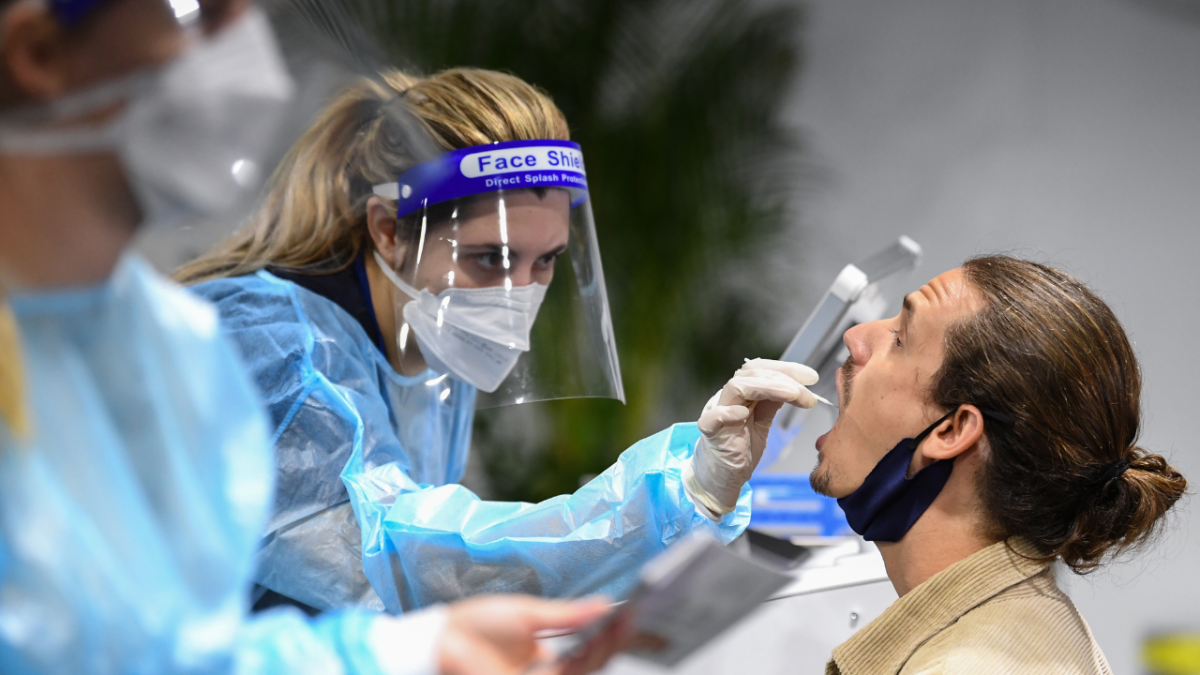
If you haven’t already caught COVID-19, every headache or hint of fatigue probably gives you a mini anxiety attack, but they may not be the early symptoms you should be looking out for.
Since Omicron surged and took over our case numbers, the most common symptoms people have previously known to look out for have changed.
While the main set of symptoms for COVID hasn’t changed hugely since 2019, some have become far more or less common with new variants.
This has caused a scientists in the UK to urge governments to update messaging around symptoms to stop people ignoring the signs.
So how do you know if it’s COVID, and what should you look out for first?
UK data released in December from the ZOE COVID symptom tracking app shows the most common symptoms of Omicron are predominantly cold symptoms, like a sore throat, runny nose, sneezing, headaches and fatigue.
Previously common symptoms with other variants like a fever, body aches, loss of taste and smell and shortness of breath are becoming less common as Omicron has become the dominant variant in many parts of the world.
This means symptoms could be harder to identify as COVID. For some people it starts with a sniffle, a headache, stuffy head or a congested feeling, which you may chalk up to allergies or a common cold.
But one of the most common early signs of Omicron is a sore throat.
A sore or scratchy throat quickly became the marker of Omicron. It’s a common symptom that was rarely reported by patients with other variants.
More recently it’s also become one of the most common first symptoms people experience before they take a test.
Commissioner of the Chicago Department of Public Health Dr Allison Arwady told NBC last week a sore throat is the most common symptom for predicting a positive COVID test.
“Especially in people who we’re seeing these more mild breakthrough infections, we are definitely seeing sore throat be a predictor in that group,” Arwady said.
She said while double or triple-vaccinated people are less likely to become seriously ill, have a fevers or difficult breathing,” they are more likely to experience and possibly misdiagnose common cold symptoms.
“They may only feel like they have a cold,” she said.
“That’s good because they’re not getting seriously sick, they’re not threatening the healthcare system, but it’s certainly of some concern because they do have the potential to transmit to others.”
Can ppl stop getting offended if someone says they should isolate and not go out for a while because they’re having covid symptoms even though it’s not really even covid yet but just to make sure no one’s gonna contract the flu/virus that they’re having until they r ok??
— 葉爱美 (@MadieeYap) January 18, 2022
Omicron’s incubation period — the time between being infected and expressing symptoms — is shorter than other variants, so it’s important to monitor how you feel and test and isolate if you feel under the weather.
According to the US Centers for Disease Control and Prevention (CDC), the median incubation period is three days as of December 31, shortened from the average five-day incubation period we’ve been told to expect for the past two years.
So if you’re feeling a little tired, don’t immediately freak out. Fatigue isn’t usually the first symptom, and lord knows there are plenty of reasons to feel exhausted right now. Have a glass of water, get a good night’s sleep and keep reassessing while making sure you’re isolating just in case.
If you start feeling congested or have a scratchy throat, it could very well be COVID.
In either situation try to get a test asap. If you can’t get your hands on a rapid antigen test thanks to our incompetent government, remember symptomatic people can still get a PCR test for free, anytime.



